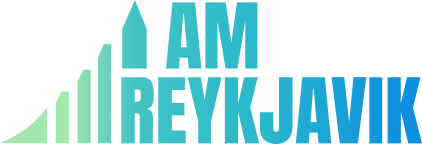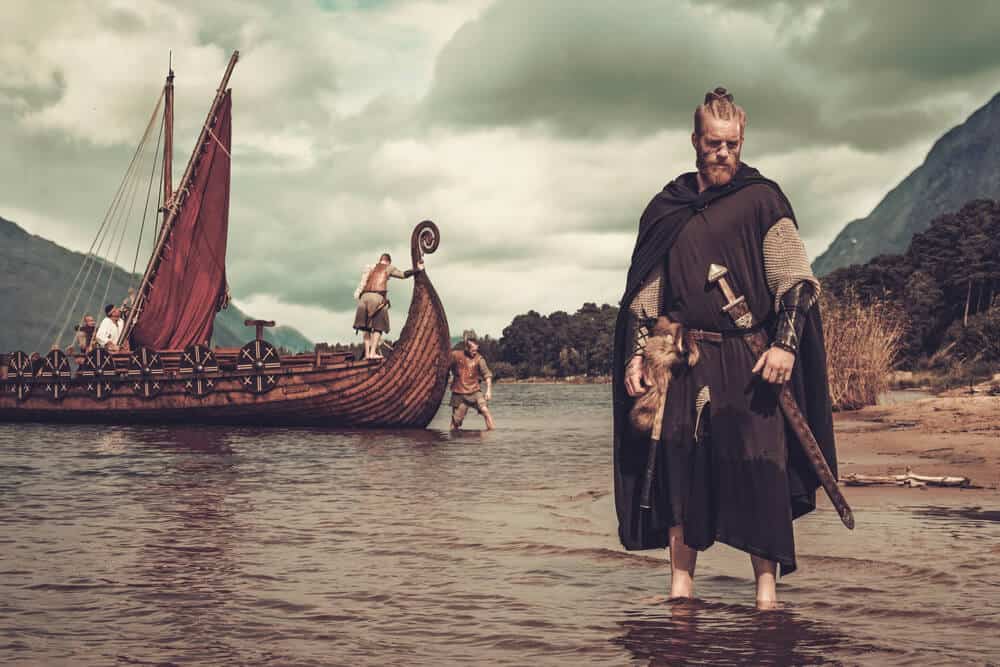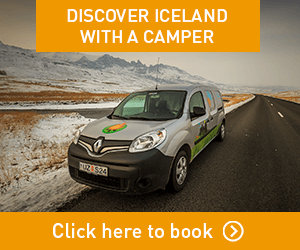Iceland is a unique place for many reasons. Not only is it a small island with fiery, active volcanoes and frosty glaciers, it also has a fascinating history. To me, one of the most interesting things about Iceland is that the modern-day inhabitants descended from the Vikings. This is not hyperbole. These Nordic conquerors settled the island in the late 9th century AD. They brought everything with them, from their religion to their language and even their horses. During the Viking Age, Scandinavian Norsemen used trade, raids, colonization, pillaging, plundering, and conquest to explore and expand in Europe. Iceland was no exception. The country still has many remnants from this period of its history, including its current day form of government and traditional naming customs. Vikings are even the reason why Greenland is called Greenland and Iceland is called Iceland. Let’s learn more about the Norsemen from Iceland’s past.

The Viking Age Settlements
If you traced the history of the Vikings in Iceland, you would eventually lead back to the island’s settlement. For a very long time, Iceland was uninhabited. There is a historical work by priest Ari Þorgilsson called the Íslendingabók (Book of Icelanders). It deals with early Icelandic history and chronicles the families who settled here. Icelanders use the modern-day, digital version to make sure they’re not dating a cousin!
According to the book, the settlement period started in 870 AD and lasted until 930 AD. While there is still some debate as to whether or not Irish monks lived on the island at the time the Vikings arrived, the official settlement date is 874 AD. This is when a Norseman named Naddod accidentally stumbled upon the island while sailing in the North Atlantic. Eventually, Norwegian families fleeing from cruel King Harald Fairhair began making their way to the newly discovered Iceland.
By 930 AD, much of the island has been settled and its ruling government had established the Althingi, the world’s oldest parliament. If you’ve ever seen the popular History Channel show Vikings, you’ll notice that in the first few episodes they talked about going to a big meeting called “The Thing”. It’s a large gathering of all the chieftains and powerful tribesmen who come together to make important decisions for the community. The Vikings who settled Iceland adopted (or rather, continued) this form of governance and established their Althingi at Thingvellir National Park.
The settlement period was a captivating and dynamic time in Iceland’s history. If you’d like to learn more, be sure to stop by the Saga Museum or the Settlement Exhibition in Reykjavik. You’ll step back in time and see how Icelanders lived in former times. Try on Viking costumes and view the lifelike figures in various settings.

The Viking Sagas
So how exactly do we know so much about the Vikings in Iceland? Well, in addition to the Íslendingabók, we also have the Viking sagas (Íslendingasögur). This group of 40+ works of literature recounts the history of Iceland during the 9th, 10th, and early 11th centuries. The stories consist of prose narratives that tell of historical events, family history, and genealogy. There are even places in Iceland, like Rauðfeldsgjá ravine and Sölvahamar cliff in Snaefellsnes peninsula, which get their names from characters and stories in the sagas. They make for interesting reading and clue you into the historical and folkloric context in which Iceland developed.
Old Norse and Iceland’s Linguistic Heritage
Iceland has a lot to thank the Vikings for, including their language. Around a thousand years ago, people in Scandinavia spoke a Northern Germanic language known as Old Norse. It evolved from Proto Norse and eventually turned into the Scandinavian languages of Norwegian, Danish, Swedish, Faroese, and Icelandic. The Viking settlers who first landed on Iceland spoke Old Norse. Due to the island’s relative linguistic isolation, modern-day Icelandic very closely resembles Old Norse. In fact, Icelanders can read the Viking sagas in their original language. If you’re looking at ancient and modern texts side by side, many of the words are exactly the same. Pretty cool, right?
Another linguistic relic that Icelanders inherited from the Vikings is naming customs. We don’t use traditional last names the way many people around the world do. That is to say, if my father’s last name is Smith, it doesn’t mean that my last name will also be Smith. Instead, we’ll use the parent’s first name followed by “son” or “daughter” (“son” or “dottir” in Icelandic). So if my father’s name is Ragnar my last name would be Ragnarsdottir and my brother’s last name would be Ragnarsson. And when Björn Ragnarsson has children, they could be named Helga Björnsdottir or Magnús Björnsson.

Iceland’s Viking Past: The Settlements and The Sagas
As you can see, Iceland’s past, present, and future have strong ties to the Vikings. I always find it really neat when countries and cultures have not been tainted by outside influences. While diversity is great, I also think it’s really wonderful to get a sneak peek into how things were in the olden days because they have been preserved. Think about it: The Icelanders that you meet on the streets of Reykjavík, Akureyri or Vík may have had a great great great great great great grandparent who sailed on a snekkja, skeid, or Drakkar longships. You can really feel a link to the past and I for one find that very exciting. I hope you’ve learned something new today and see that our country is more than just Björk or lopapeysa sweaters. We have a rich culture and history that reaches back over a thousand years.




